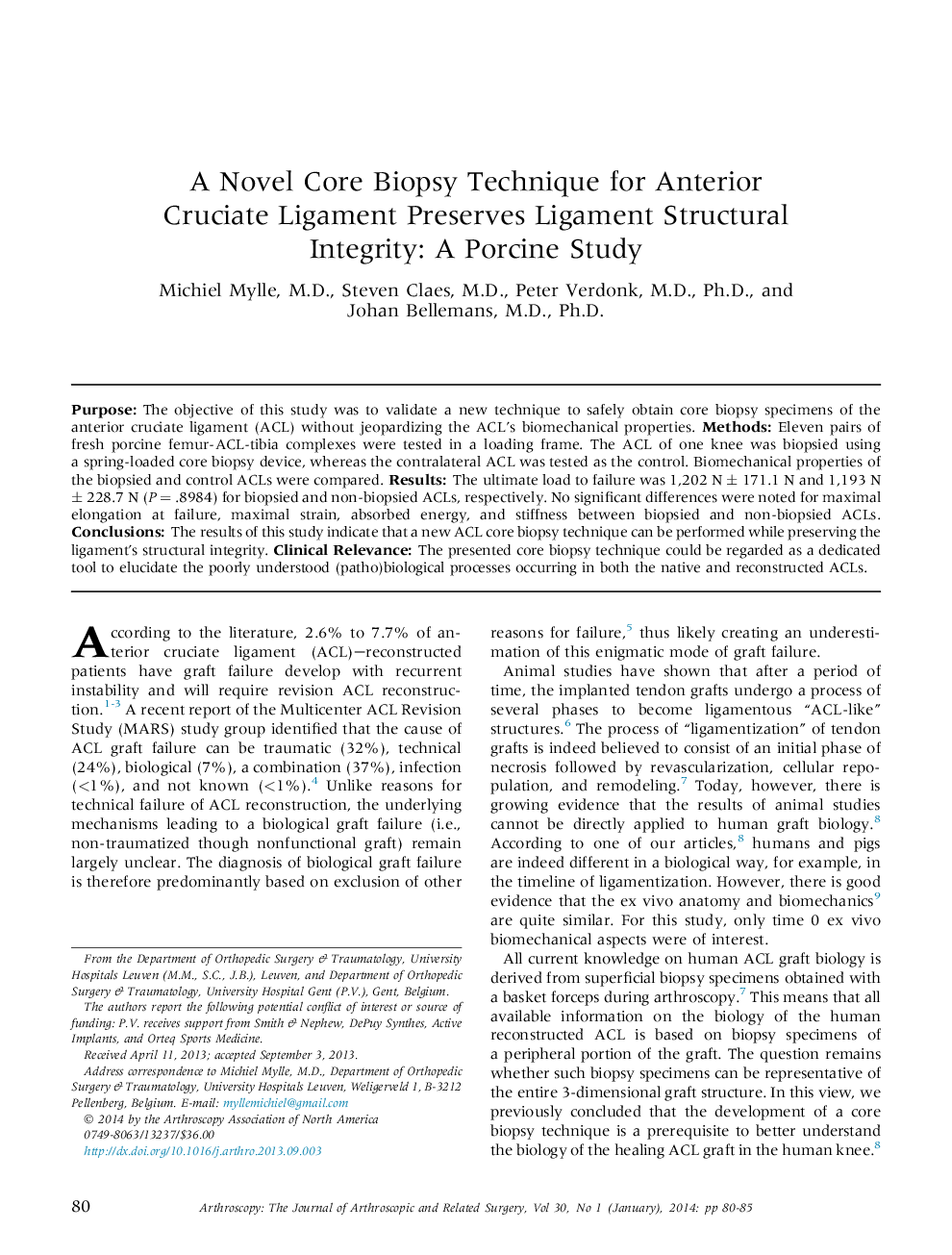| Article ID | Journal | Published Year | Pages | File Type |
|---|---|---|---|---|
| 4043381 | Arthroscopy: The Journal of Arthroscopic & Related Surgery | 2014 | 6 Pages |
PurposeThe objective of this study was to validate a new technique to safely obtain core biopsy specimens of the anterior cruciate ligament (ACL) without jeopardizing the ACL's biomechanical properties.MethodsEleven pairs of fresh porcine femur-ACL-tibia complexes were tested in a loading frame. The ACL of one knee was biopsied using a spring-loaded core biopsy device, whereas the contralateral ACL was tested as the control. Biomechanical properties of the biopsied and control ACLs were compared.ResultsThe ultimate load to failure was 1,202 N ± 171.1 N and 1,193 N ± 228.7 N (P = .8984) for biopsied and non-biopsied ACLs, respectively. No significant differences were noted for maximal elongation at failure, maximal strain, absorbed energy, and stiffness between biopsied and non-biopsied ACLs.ConclusionsThe results of this study indicate that a new ACL core biopsy technique can be performed while preserving the ligament's structural integrity.Clinical RelevanceThe presented core biopsy technique could be regarded as a dedicated tool to elucidate the poorly understood (patho)biological processes occurring in both the native and reconstructed ACLs.
